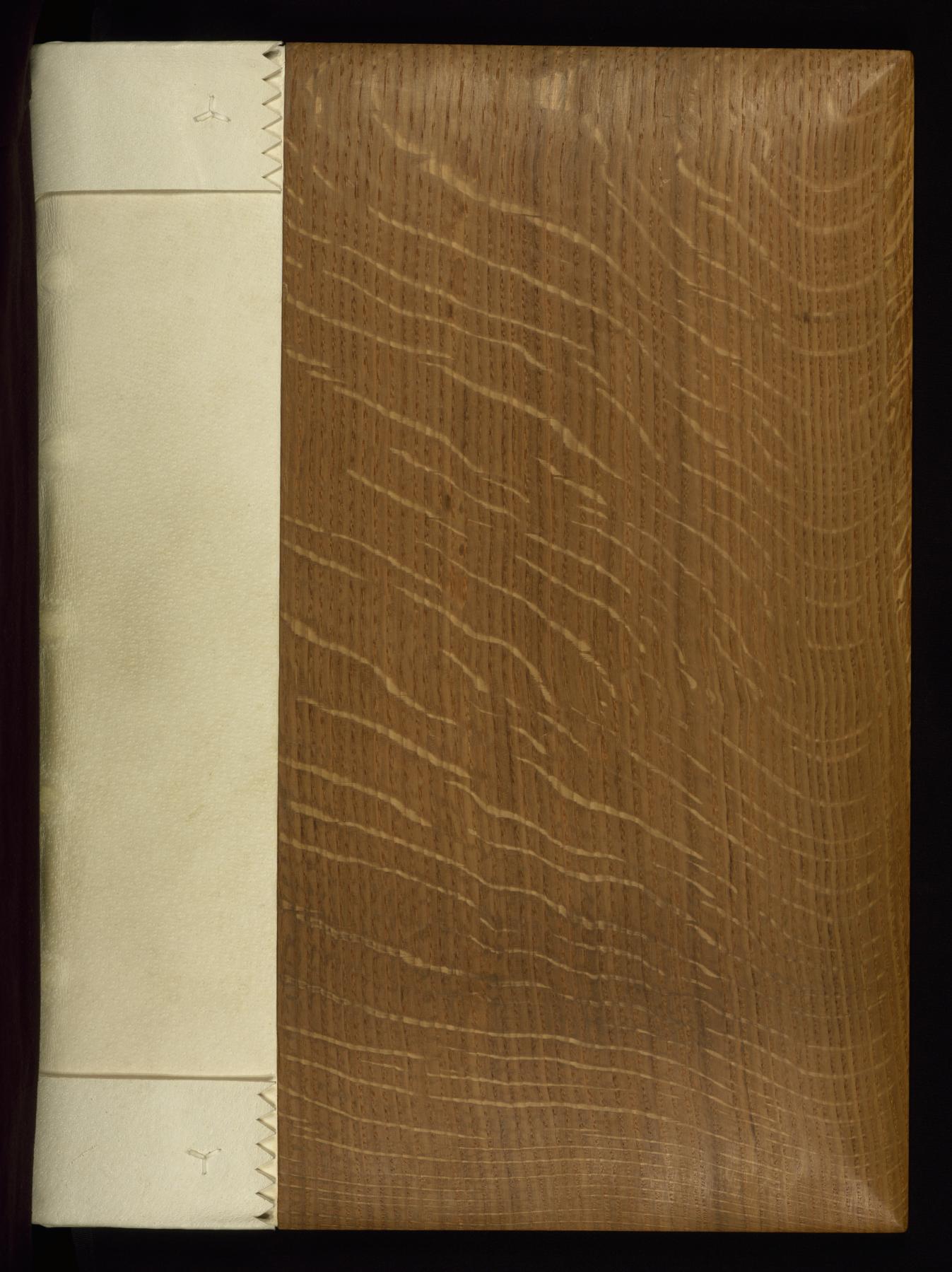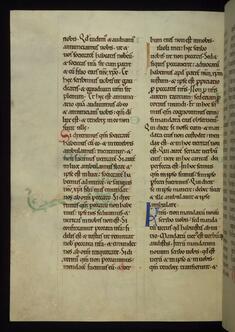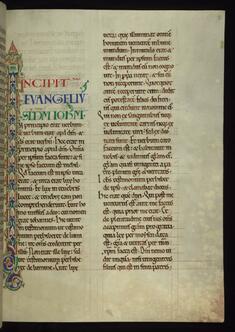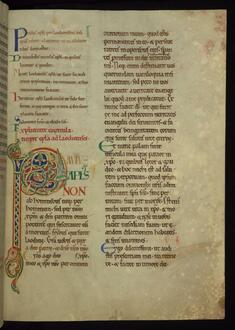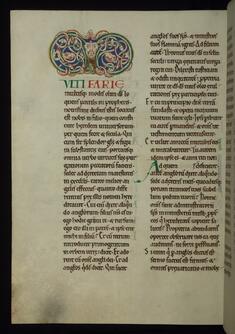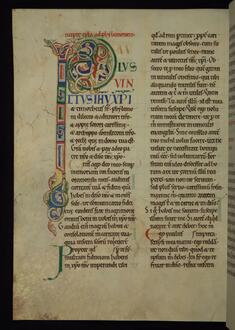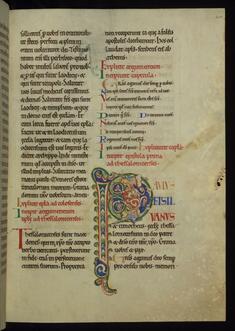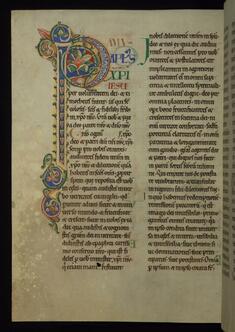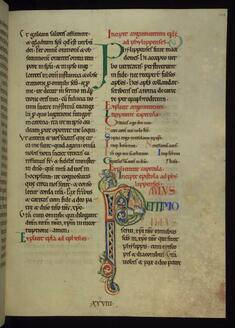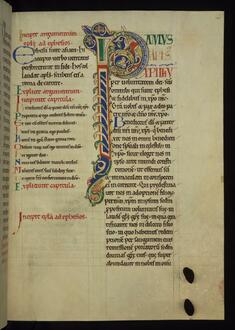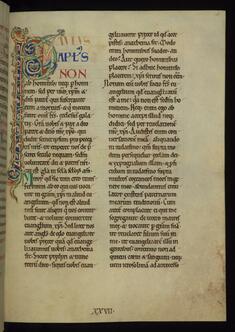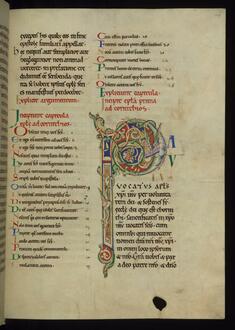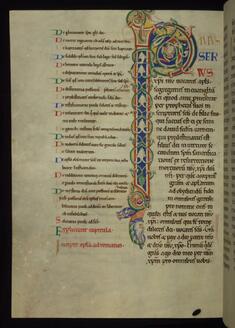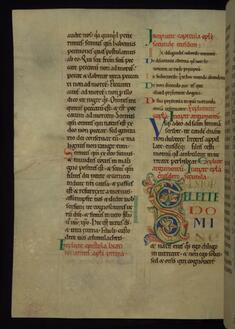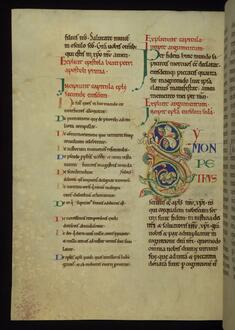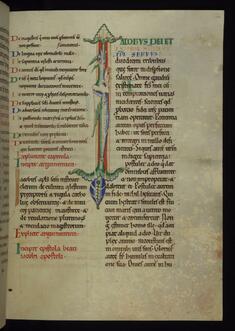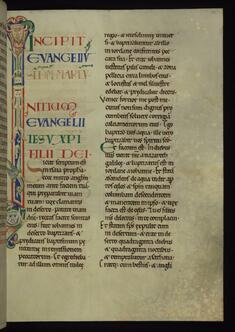Rochester New Testament
(Manuscripts and Rare Books, Medieval Europe )
This large-format copy of the New Testament was almost certainly created at Rochester Cathedral Priory, England, in the first half of the twelfth century. It was part of a five-volume Bible, only one other volume of which, London, British Library Ms. Royal I.C.VII, has survived. The decorated initials in these manuscripts compare closely with those in other books securely attributed to Rochester. Textually these books are closely related to the Gundulph Bible (San Marino, Huntington Library Ms. HM 62), known to have been produced at Rochester in the second half of the eleventh century. Although neither the Walters' nor the British Library's volume includes an inscription associating this Bible with Rochester, the two medieval catalogs of the Rochester Cathedral library, produced around 1130 and in 1202, contain references to manuscripts that correspond well with them. The book's large size indicates it that was designed to be read aloud, either during services or at meals in the refectory. Large, fanciful initials filled with succulent foliage, fruit, dragons, animals, and human faces begin each section of the text. Executed in a vibrant palette of red, blue, green, ochre (in place of gold), and yellow, the intricate, dynamic designs capture the essence of Romanesque manuscript illumination. Royal I.C.VII also includes four historiated initials (for the books of Joshua, I Samuel, 2 Samuel, and 2 Kings). Although the Bible was made at Rochester, the pre-Gothic script of W.18 in particular is extremely close to that practiced at nearby Canterbury at the time.
Provenance
Provenance (from the French provenir, 'to come from/forth') is the chronology of the ownership, custody, or location of a historical object. Learn more about provenance at the Walters.
Priory scriptorium of Rochester Cathedral, England, 12th century [possible reference in catalog in Textus Roffensis, Rochester Cathedral Library Ms. A.3.5, fol. 230r; more certain reference in 1202 library catalog in British Library Ms. Royal 5 B.XII, fol. 2r]; Leon Gruel, Paris, before 1931 [mode of acquisition unknown, no. 1138]; Henry Walters, Baltimore, before 1931, by purchase; Walters Art Museum, 1931, by bequest.
Exhibitions
| 2009 | The Saint John's Bible: A Modern Vision through Medieval Methods. The Walters Art Museum, Baltimore. |
| 2002 | The Book of Kings: Art, War, and the Morgan Library's Medieval Picture Bible. The Walters Art Museum, Baltimore; Academy Art Museum, Easton; Princeton University Art Museum, Princeton; The Mitchell Gallery, Annapolis; Williams College Museum of Art, Williamstown. |
| 1996 | To Arrest the Ravages of Time: Caring for Art at the Walters. The Walters Art Gallery, Baltimore. |
| 1992-1993 | The Bible Before Luther. The Walters Art Gallery, Baltimore. |
| 1991-1992 | The Illuminated Initial. The Walters Art Gallery, Baltimore. |
| 1990-1991 | The Book and the Author: Portraits of the Evangelists in Eastern and Western Manuscripts. The Walters Art Gallery, Baltimore. |
| 1990 | From Romanesque to Gothic: Illumination in Transition. The Walters Art Gallery, Baltimore. |
| 1984-1985 | Illuminated Manuscripts: Masterpieces in Miniature. The Walters Art Gallery, Baltimore. |
| 1968 | In Remembrance of Creation: Evolution of Art and Scholarship in the Medieval and Renaissance Bible. Brandeis University Library, Waltham. |
| 1965 | 2,000 Years of Calligraphy. The Walters Art Gallery, Baltimore. |
| 1949 | Illuminated Books of the Middle Ages and Renaissance. Baltimore Museum of Art, Baltimore. |
Geographies
United Kingdom, England, Rochester, Rochester Priory (Place of Origin)
Measurements
H: 15 3/16 x W: 11 1/8 in. (38.5 x 28.3 cm)
Credit Line
Acquired by Henry Walters
Location in Museum
Not on view
Accession Number
In libraries, galleries, museums, and archives, an accession number is a unique identifier assigned to each object in the collection.
In libraries, galleries, museums, and archives, an accession number is a unique identifier assigned to each object in the collection.
W.18
Do you have additional information?
Related Objects


